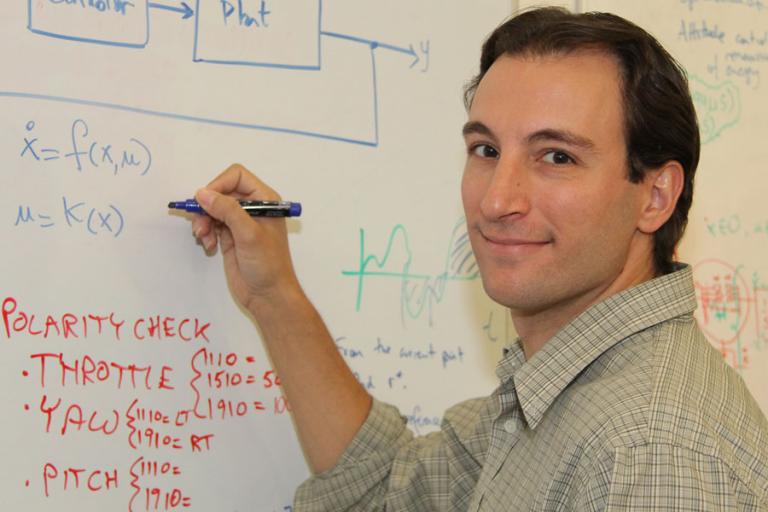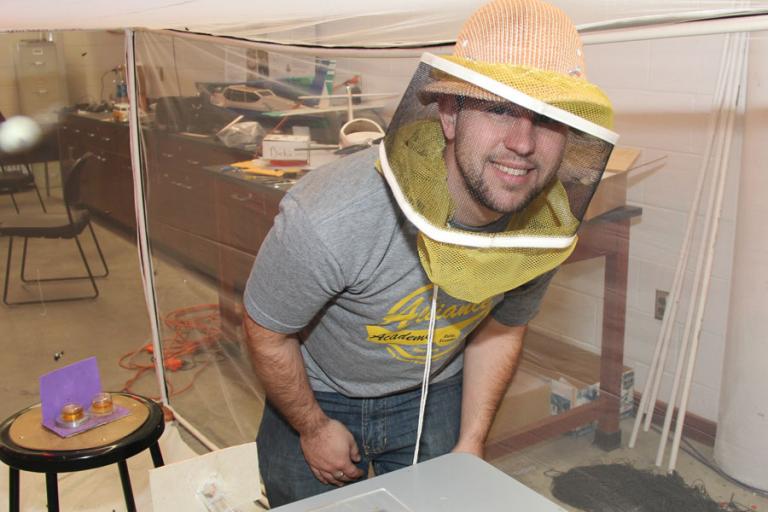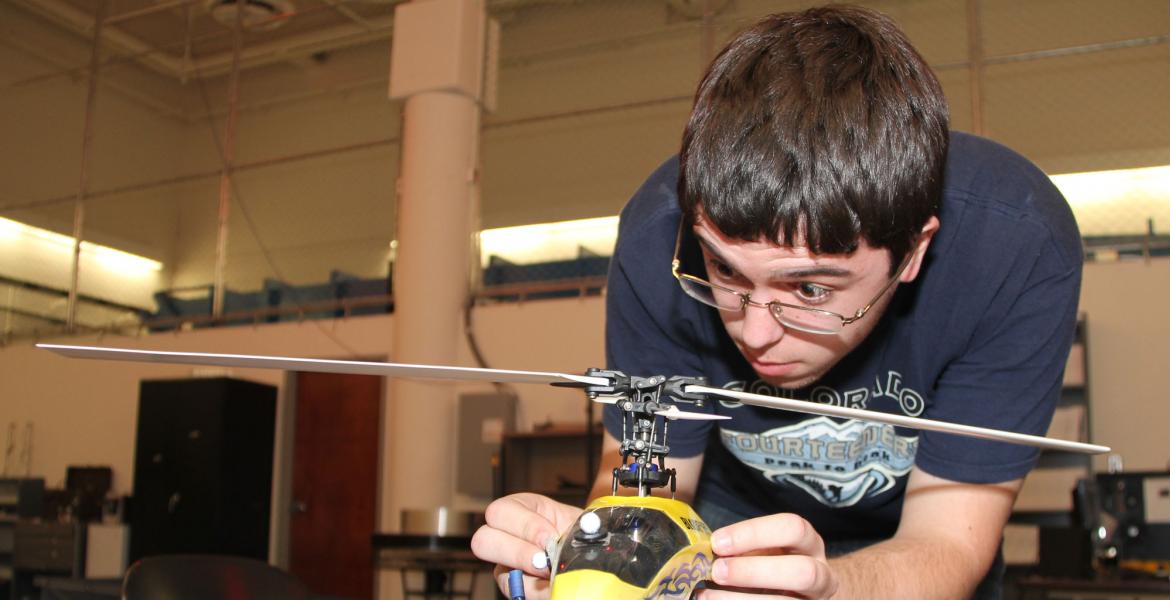UA Engineers Study Birds and Bees to Design Robust Unmanned Vehicles
The UA College of Engineering's Hybrid Dynamics and Control Laboratory is developing mathematical analysis and design methods that could radically advance the capabilities of unmanned aircraft and ground vehicles, as well as many other systems that rely on autonomous decision making.
Researchers in the lab design computer control systems that may one day allow robotic surveillance aircraft to stay aloft indefinitely. These systems also might be used to safely guide aircraft and automobiles through small openings as they enter buildings. Or they could help airplanes and ground vehicles navigate in cluttered environments without colliding.
In addition, the research can be applied to multiple programmable devices aboard vehicles or in stationary locations, allowing them to communicate in the presence of adversaries.
Models of the World
The lab's research focuses on mathematical analysis and design of control systems that have applications in robotics, biology and aerospace engineering.
"What we do here in our lab is mainly theory," said Ricardo Sanfelice, an assistant professor of aerospace and mechanical engineering, who directs the lab. "We model dynamical systems, analyze them mathematically, devise ways to control them, test them in simulations and, when possible, validate them in our test bed.
"But, because of the complexity of movement in some systems that can include sudden transitions in speed or direction, we have to be very careful to be sure computer simulations reflect the real world, and that's where the experimental lab provides a place for us to check our results."

The lab, which is located in UA's Aerospace and Mechanical Engineering building, consists of a computer room, where Sanfelice and his students devise the computer control systems, and a cavernous test lab, topped with eight motion-capture cameras.
The cameras, which were originally designed to create animated figures from the recorded movements of humans and animals, sit on a rail 20 feet off the floor and track the movements of radio-controlled model airplanes, helicopters and automobiles that are flown or driven by computers. The cameras take the place of satellites in this indoor GPS system.
"We can test our theories 24/7 in this test lab without the weather constraints involved in outdoor testing," Sanfelice, said. "We mathematically model the systems we want to control and design a set of computer instructions to accomplish a particular task, such as hovering."
Testing outdoors is more time consuming and costly, and conditions are more difficult to control, he explained. Testing indoors allows the computing brains to stay safely on the ground making decisions based on data coming from the motion-capture cameras. The cameras continuously record the vehicle's position, orientation, and velocity.
"When we transition to outdoor testing, the computer has to be onboard, like a traditional airplane autopilot, receiving information from satellite-based GPS systems, whereas in the lab, the cameras function as the GPS," he said.
"After extensive testing indoors, we're in a better position to use our resources more efficiently when we transfer to outdoor, real-world experiments to validate and fine tune our controllers."

On the Up and Up
Sanfelice and his students currently are studying ways to extract energy from wind gusts and thermals to gain altitude without using power, just like birds do when soaring to greater altitudes. "This is very different from traditional control system design, where you want to nullify the effects of perturbations. Here, we're exploiting them," he said.
One project involves autonomous soaring in which the computer "pilot" actively searches for thermals (areas of rapidly rising air) that might occur when sunlight warms a plowed field or stretch of asphalt.
In the lab, fans and wind tunnels generate these mock thermals and wind gusts.
"If the plane detects a change in altitude that wasn't created by the navigation system, the computer begins to explore that area to find the thermal," he said. If the lift occurs off the left wing, for instance, the computer will turn the plane to the left, but if it doesn't find the thermal during this turn, it will change direction and cut the area at a different angle.
Designing the computer software and other parts of the systems is math-intensive, centering on differential equations and difference equations. Differential equations describe the continuous motion of vehicles. Meanwhile, the controllers may introduce abrupt changes, known as "discontinuities" in the math world, that are best described by difference equations.
This is where the term "hybrid" fits into the lab's title, meaning analysis of both continuous and discontinuous motion.
A ball bouncing on the ground offers a simple example, Sanfelice said. The ball exhibits a smooth motion between impacts. This can be described by differential equations. But at impacts, there is an almost instantaneous change in velocity, and difference equations are best suited to modeling it.
Buzzed About Bees
A similar discontinuity occurs in another area of the lab's research -- flying a model airplane through a window from outdoors to indoors. Bees do this when flying back into a hive, and Sanfelice is recording their motions to see how they do it. "From a control point of view, we may want to mimic the maneuvers the bees are executing, in particular, the maneuvers they use to cope with the discontinuity in the airflow" he said.
Sanfelice noted that hybrid control system theory is a relatively new field, having evolved during the past 20 years or so. As a result, theoretical tools for analysis, design, and simulation of hybrid control systems are in the early stages of development. "We are developing a toolbox for such systems, to make them more designer- and user-friendly," he explained. "We hope that our simulation software for these systems will eventually become part of a commercial simulation product."
Some researchers who work in hybrid controls focus only on theory, while others work almost exclusively on the experimental side. "I feel like our group can contribute to theory and practice," Sanfelice said. "We can develop theoretical tools, and, at the same time, make sense of the theory experimentally. That's why I built this test lab.
"I think the students find it inspirational, too. Many of the undergraduates are now motivated to go on to graduate school, and I encourage all of them to take more mathematics than is required for their degree. So there is a lot of potential here."
Sanfelice and two coauthors are writing a book that describes their theoretical work. It is scheduled for publication in 2011.


